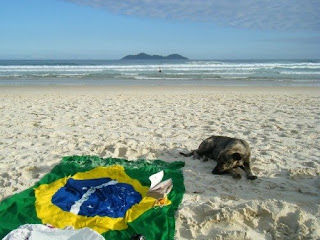
Maroantsetra, or “many spears,” is an average-sized city on the Northeast coast of Madagascar. It is situated between the bay of Antongile and the lush tropical rainforest. Despite the issues and political unrest that plague Madagascar, Maroantsetra remains peaceful, with a sleepy vibe and friendly atmosphere. With the crashing waves of the Indian Ocean, and the fragrance of vanilla, cloves, and other harvested spices, blowing through the warm, humid air, this place offers complete serenity. Sadly, forest degradation is destroying much of Madagascar, but Maroantsetra is home to Masoala National park, which is regarded as the largest protected area in the country. Here you can truly experience untouched Madagascar, and catch glimpses of its unique animal species, like the Red Ruffed Lemur, Leaf Tailed Gecko, and the Aye Aye. For an even more dazzling spectacle of wildlife, and to learn about the areas history, head out to the small island of Nosy Mangabe, located 3 miles (5 km) from the coast. Those who really want to feel at one with the environment can camp for a few nights on this island nature reserve, and walk amongst the diverse plant life and Antimaroa clan tombs. Though many travelers do visit Maroantsetra, in remains “un-touristy” and is a must for anyone to experience.
To get to Maroantsetra, there are several options, depending on how much adventure you’re seeking. Flying is one way to arrive, but for the biggest thrills you can drive along the treacherous, yet scenic coastal highway. Or, if you’re leaving from Tamatave, try cruising your way in a small wooden boat, known as a “boutre”. No matter how you get to the city of “many spears”, you will come away with a genuine appreciation of Madagascar and all it has to offer.

































